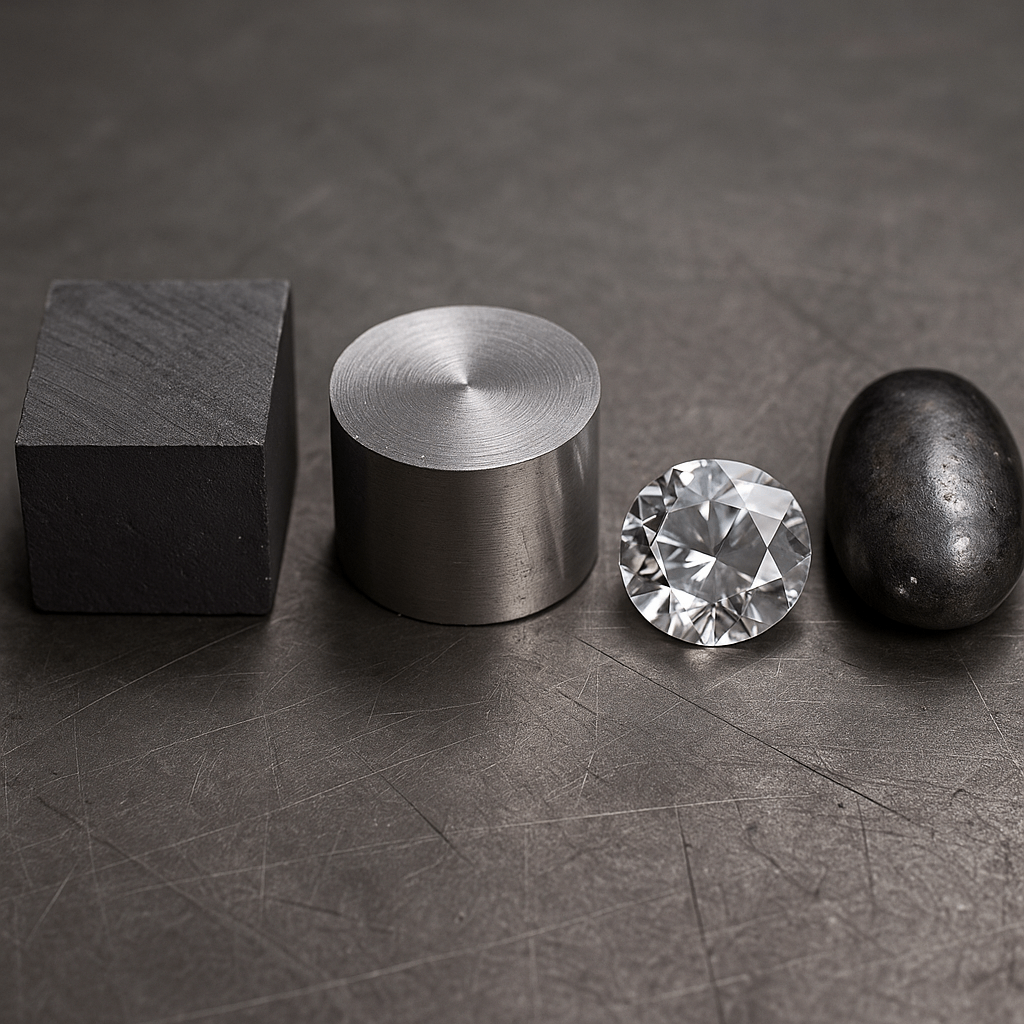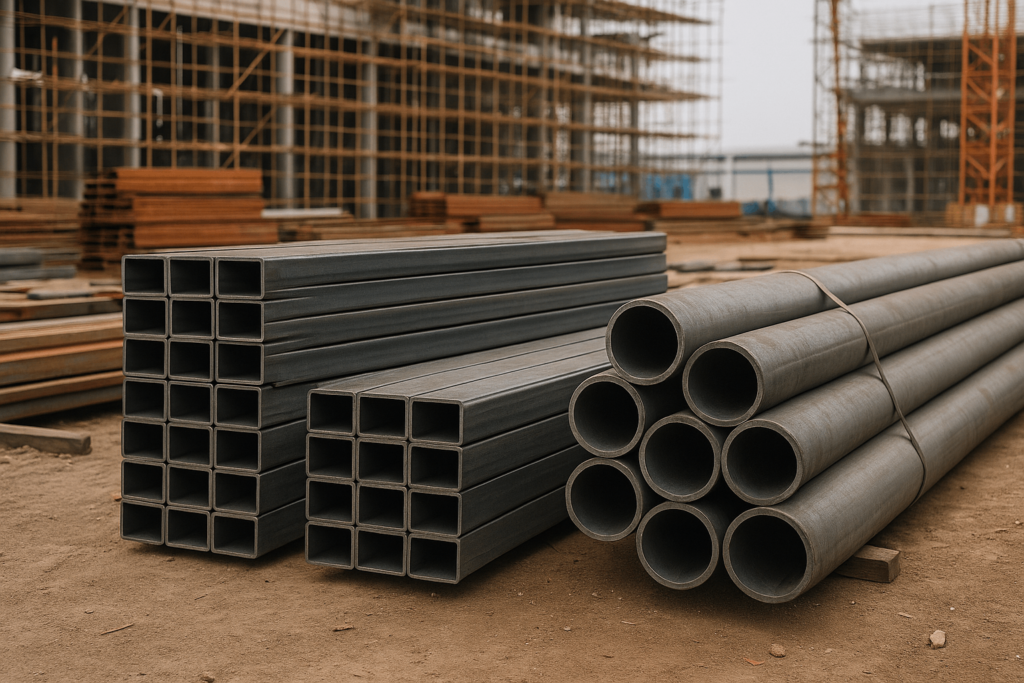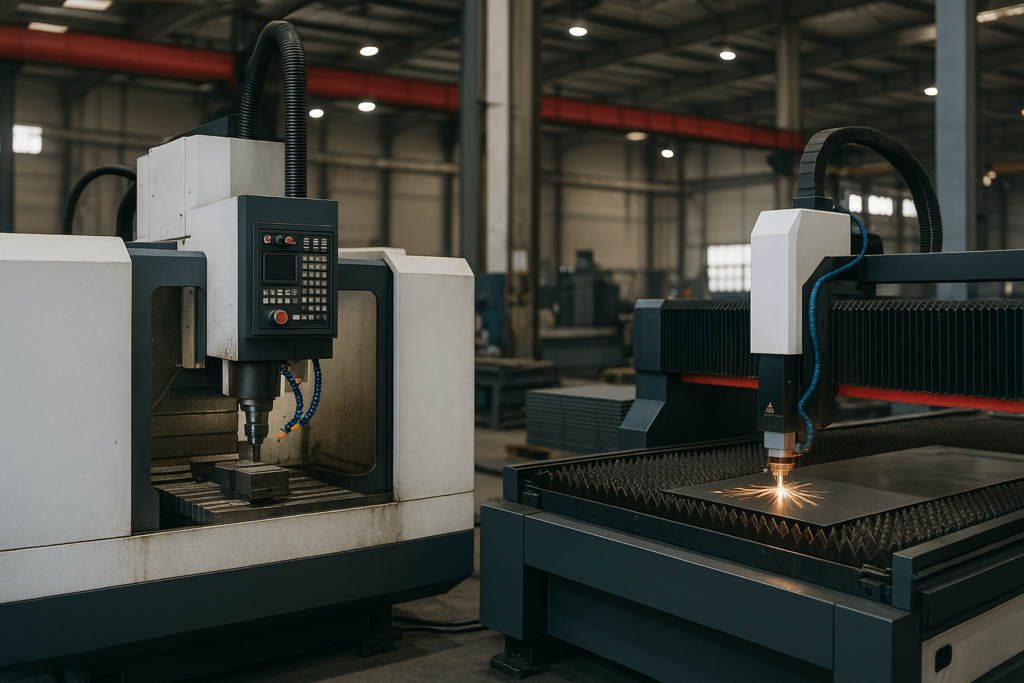For engineers and procurement managers, material density is more than a figure on a spec sheet. It’s a critical variable that directly impacts your product’s performance, manufacturing cost, and logistical viability. Understanding its nuances is a strategic advantage, especially when comparing options like carbon steel density in kg/m³ or evaluating the best carbon steel for CNC machining.
This guide provides actionable insights for making smarter material purchasing decisions, helping you optimize for durability, manage project budgets, and avoid costly downstream failures.
The Foundation: Carbon's Role in Steel's DNA
To grasp the importance of carbon steel’s density, we must first look at carbon itself. The element’s ability to form different atomic structures, known as allotropes, is the key to steel’s versatility.
This structural variety, from soft graphite (~2.26 g/cm³) to hard diamond (~3.51 g/cm³), illustrates a core principle: atomic arrangement dictates physical properties. This foundational knowledge helps us at YISHANG predict material behavior and optimize custom carbon steel manufacturing for our clients.

The Transformation: How Carbon Content Dictates Steel's Performance
The addition of a small, controlled amount of carbon transforms brittle iron into robust steel. This process re-engineers the material’s properties at an atomic level.
The carbon percentage is the master controller, influencing not just density, but the critical balance of hardness, strength, and ductility. While the density change across steel grades is subtle—often less than 1%—the corresponding changes in mechanical properties are dramatic and hold significant commercial implications for your project. If you’re wondering how to calculate carbon steel density for a particular grade, understanding carbon percentage is the first step.
A Spectrum of Strength: Low, Medium, and High Carbon Steel
Selecting the right material grade is a critical first step toward project success. Carbon steels are categorized into three main types, each offering a unique performance profile for different industrial applications.
Low Carbon Steel (Mild Steel): With up to 0.3% carbon, this is the most economical and widely used grade. Its high ductility makes it ideal for forming complex shapes, such as metal frames, custom enclosures, or automotive panels.
Medium Carbon Steel: Ranging from 0.3% to 0.6% carbon, it offers a balanced profile of strength and wear resistance. It’s a common choice for components like gears and high-stress structural parts that demand greater durability.
High Carbon Steel: Containing over 0.6% carbon, this is the hardest and strongest grade. Its exceptional resistance to abrasion makes it the go-to material for cutting tools, industrial springs, and parts where longevity under stress is paramount.
This comparative table provides a clear, actionable overview for procurement decisions:
| Steel Type | Carbon Content (%) | Typical Density (g/cm³) | Key Business Advantages | Common Industrial Applications |
|---|---|---|---|---|
| Low Carbon Steel | < 0.3% | ~7.85 | Cost-effective, excellent formability, fast fabrication | Structural beams, vehicle bodies, pipes, custom cabinets |
| Medium Carbon Steel | 0.3% – 0.6% | ~7.84 | High strength-to-cost ratio, good wear resistance | Gears, railway tracks, machine parts, crankshafts |
| High Carbon Steel | > 0.6% | ~7.82 | Maximum hardness and longevity, superior wear resistance | Cutting tools, industrial springs, high-tensile wires, dies |
As the table shows, even a marginal decrease in density—driven by increased carbon—delivers a significant and commercially valuable increase in hardness and mechanical performance. This is a key strategic trade-off in carbon steel material selection.
Beyond Density: The Critical Link to Hardness and Malleability
Optimizing for a single material property can lead to costly project setbacks. Effective carbon steel selection requires balancing interconnected properties such as density, hardness, and malleability—all governed by carbon content.
For instance, the high malleability of low carbon steel makes it ideal for manufacturing complex parts. Attempting the same process with brittle high carbon steel would risk fractures and material waste. This practical, experience-driven understanding is essential for avoiding costly manufacturing errors in carbon steel CNC applications.
Real-World Impact: Density's Role Across Key Industries
Textbook knowledge becomes powerful when paired with field-tested application. For a B2B buyer, seeing how these principles solve problems in their specific sector is what builds confidence in a supplier. With a history of exporting to over 50 countries, our 26+ years in carbon steel fabrication at YISHANG have provided us with deep, practical insights as a Chinese carbon steel fabrication factory.
Automotive & Hardware: The Quest for Lightweighting and Durability
In the hyper-competitive automotive industry, the strength-to-weight ratio is a critical battleground. According to the World Steel Association, using Advanced High-Strength Steels (AHSS) can reduce a vehicle component’s weight by up to 25% without compromising safety.
We collaborate with automotive clients to select these advanced steels, enabling the use of thinner, lighter components. For our partners, this translates to products that meet stringent standards for lightweighting, contributing to fuel efficiency and competitive advantage. When calculating part weight, understanding the difference between low and high carbon steel density is essential.
Construction & Agriculture: Balancing Strength, Weight, and Cost
The construction and agriculture sectors demand uncompromising durability. However, steel density directly affects shipping volume and total project cost. A heavier frame requires larger cranes and increases logistics expenses.
For example, a standard 40-foot shipping container has a maximum payload of around 26 tons. Selecting overly dense steel can result in excess shipments and inflated transportation costs. We guide clients to choose steel grades with optimal load-bearing capacity and material density, ensuring structural integrity while keeping budgets in check. Clients often ask for carbon steel density for structural design, which we calculate based on application needs.
Medical & Vending Machines: Precision, Stability, and Compliance
In industries like medical equipment and vending systems, product stability and center of gravity are key. Here, material density directly impacts performance, safety, and longevity.
We ensure all raw materials and surface treatments are RoHS compliant, critical for access to European and other regulated markets. With deep expertise in precision steel fabrication, we help clients optimize performance, meet design intent, and ensure compliance.
The Manufacturer's Perspective: How We Ensure Your Project's Success
Applying material science in high-volume manufacturing separates average vendors from strategic partners. For B2B clients, consistency and precision are non-negotiable. Our robust quality control systems and decades of fabrication experience at YISHANG are engineered to deliver exactly that.
Material Sourcing and ISO 9001 Standards
Quality control starts with the source. As an ISO certified carbon steel supplier, we demand mill test reports (MTRs) for each batch to verify chemical composition and ensure accurate carbon content.
This level of material traceability helps eliminate supply chain risks and ensures your end product performs as expected.
Advanced Fabrication Techniques and Their Impact
The density and hardness of carbon steel affect how it behaves during manufacturing. That’s why we invest in precision CNC machining and laser cutting systems tailored to each steel grade.
Our skilled technicians adapt fabrication methods to match material properties, ensuring tight tolerances, reduced scrap, and lower overall cost per part—critical for global-scale manufacturing.
The Unseen Factor: Density’s Impact on Logistics and Total Cost
A strategic partner considers your complete product lifecycle. Steel density directly influences logistics cost and shipping efficiency.
During the early design stages, our team factors in density-driven logistics planning to optimize freight loads and reduce container usage. This ensures the final product isn’t just high-quality—it’s economically competitive across the global supply chain.

Conclusion: Making an Informed Material Decision with an Expert Partner
The density of carbon steel is a cornerstone of intelligent product design, efficient manufacturing, and sound financial planning. The choice between steel grades involves a careful analysis of trade-offs—a decision that requires deep-seated practical experience.
This is where a partnership with a specialist provides its greatest value. With over 26 years of dedicated experience in OEM/ODM carbon steel manufacturing, YISHANG offers more than just fabrication. We provide the expert guidance needed to navigate these complex material decisions.
We help you optimize your design, select the material that delivers the best performance and value, and ultimately, build a more successful and competitive product. If you’re ready to discuss your next project, our team is here to help with custom carbon steel parts from China.
Frequently Asked Questions (FAQ)
1. Does higher density always mean stronger steel? Not in the case of carbon steel. As carbon content increases, strength and hardness rise dramatically, while the material’s density actually decreases slightly due to changes in the atomic crystal structure.
2. How is the density of a custom metal part verified? In an industrial setting, density is controlled by verifying the raw material’s certified composition. For finished parts, precise CMM (Coordinate Measuring Machine) measurements can determine volume, which, combined with weight, confirms the final density.
3. What is the density difference between carbon steel and stainless steel? Their densities are very similar, as both are primarily iron. Carbon steel’s density is ~7.85 g/cm³. Stainless steel ranges from 7.7 to 8.0 g/cm³, depending on the specific alloy and the amount of chromium and nickel added.
4. How does temperature affect the density of carbon steel? Like most materials, steel expands when heated. As its temperature rises, its volume increases, and therefore its density decreases. This is a critical design consideration for components exposed to high temperatures to prevent operational failure.
5. How can I choose the right carbon steel grade for my project? Consider the trade-offs between strength, hardness, ductility, and cost. For forming-intensive applications, low carbon steel is ideal. For wear-resistant parts, high carbon steel is better. Partnering with a supplier like YISHANG ensures that the material selection aligns with both technical and commercial project goals.
6. What’s the best carbon steel for CNC machining? Low to medium carbon steels like 1018 or 1045 are often preferred for CNC applications due to their machinability and dimensional stability. These grades offer a balance of strength and ease of processing, making them ideal for precision parts in industrial settings.
7. Does carbon content affect density? Yes. While the effect is relatively small, increased carbon content slightly decreases steel density due to atomic rearrangements. However, this change also greatly enhances strength and hardness, making it a key variable in material selection for carbon steel for high load structures.



